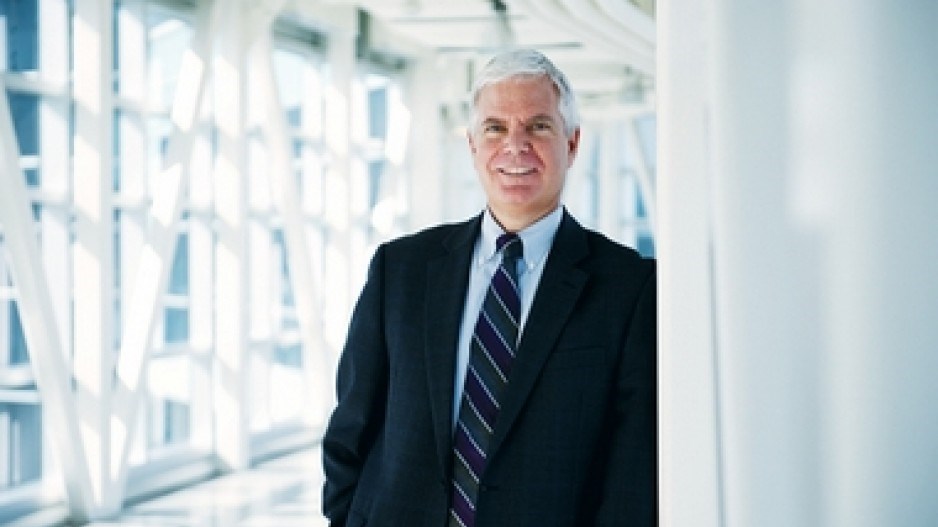As vice-president of marketing and planning for Alaska Airlines (Nasdaq:ALK), Gregg Saretsky had long championed the expansion of the small carrier's fleet into parts unknown.
After joining the Seattle-based airline in the late 1990s, the Canadian executive finally persuaded the leadership team and the board to seize upon newly open slots at Ronald Reagan Washington National Airport in Washington, D.C.
“The very first week of our service to Washington, D.C., coincided with 9/11,” recalled Saretsky, now CEO of WestJet (TSX:WJA).
“So when the skies shut down for those three days, I thought, ‘Now what?' And eventually the skies reopened and they kept the Washington National Airport closed [due to security concerns].”
Saretsky, who is scheduled to speak at the Vancouver Board of Trade September 16, admitted he wasn't the only one at Alaska to fall into “now what?” mode. The airline would have to spend the next year operating at Dulles International Airport in nearby Virginia.
But the carrier managed to double its fleet from about 60 to 120 planes as Saretsky pushed his vision of expansion throughout his decade-long tenure at Alaska.
What was once a regional player on the West Coast started flying to the Eastern Seaboard, Hawaii and Canada. Today it's the seventh-largest airline in the U.S.
“We proved to ourselves that we could actually fly beyond our comfort zone, outside of the region we're known for,” said Saretsky, who was born in Quebec and grew up in B.C.
His confidence in launching services in unfamiliar territories did not wane after leaving Alaska Airlines in 2008.
He returned to Canada in 2009 to serve as vice-president of WestJet Vacations. He was CEO by 2010. And by 2013, the company was in the midst of launching a regional airline, WestJet Encore, in Canadian territories it had never serviced before.
“I was joining not for the opportunity that they were hiring me for, but for the potential for something bigger down the road,” Saretsky said.
“I was not prepared for nor had I anticipated I'd be CEO in less than 12 months.”
Saretsky had spent the previous two decades working his way up the ranks at Canadian Airlines and Alaska and had even worked summers as a flight attendant during university.
“Here's a new leader like me, untested really, in WestJet's world,” he said.
“It's always much tougher coming in at the top.”
And his plan to shake up the airline's longtime business model – flying just one type of aircraft to help keep costs low – with the introduction of WestJet Encore was met with some skepticism among employees.
“So the executive team and I decided if we're going to go to war and take on the competition in these regional markets, you better have all of your army lined up behind you,” Saretsky said.
That meant conducting town hall meetings and going to flight decks and galleys to talk to employees, all of whom own a stake in the company, about why starting a new airline would pay dividends.
By February 2012, employees voted 91% in favour of launching WestJet Encore.
In 2008, before Saretsky had joined WestJet, the airline's revenue was $2.55 billion while profit was at $178 million.
By 2013, its annual revenue had jumped 43.5% to $3.66 billion and profits had reached $269 million.
“[Saretsky has] been at the helm a relatively short period of time and yet the amount of change that has come through is amazing,” said Richard Bartrem, WestJet's vice-president of community relations, who has worked with the CEO since his 2008 hiring.
Bartrem specifically pointed to his boss' ability to stickhandle a major strategic shift in WestJet's business model by convincing both the board and employees to add the second fleet type to its roster. He said that wouldn't have been possible without Saretsky's deep knowledge of the aviation industry.
“He wants to understand – do we have the right processes in place and are we doing everything we can to make sure that [customer] experience really delivers on operational excellence for our guests?” Bartrem said.
“This is a tremendously complex and volatile industry, and I think the reassurance … for WestJetters is you have somebody at the helm that brings a tremendous level of knowledge to the business and does so in a way that is still true to the WestJet culture.”
WestJet's expansion plans haven't cooled. Earlier this summer, the low-cost carrier began offering flights to Dublin, Ireland.
And it announced in July it would introduce wide-body aircraft into its fleet beginning in the fall of 2015 in a bid to expand its international presence even further.
“Who would've imagined in 1986, or even in 2006, that WestJet would ever fly to Europe? It just wasn't in the cards,” Saretsky said.
“The boundaries of our business, we've completely erased those.”




